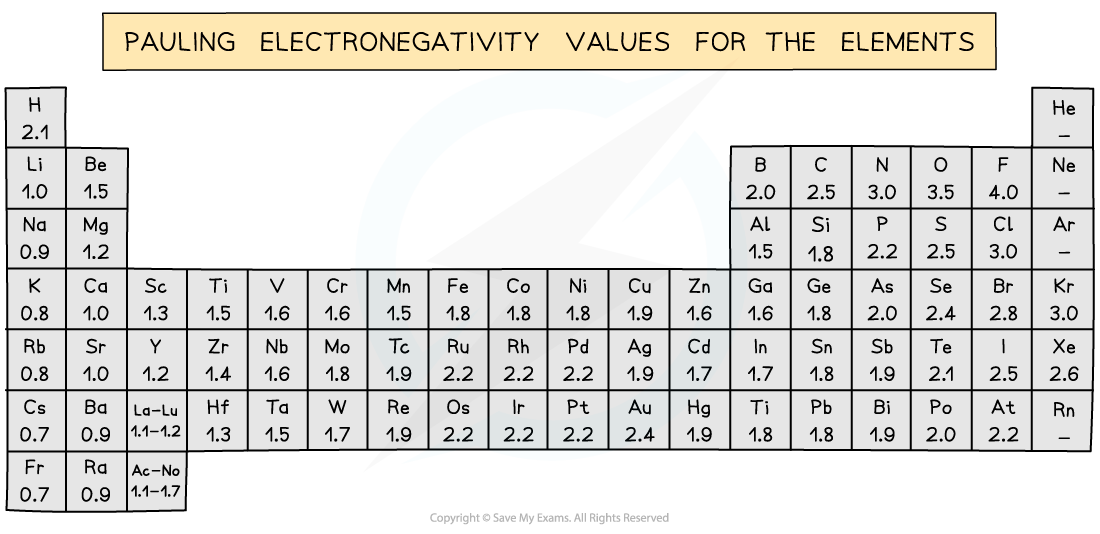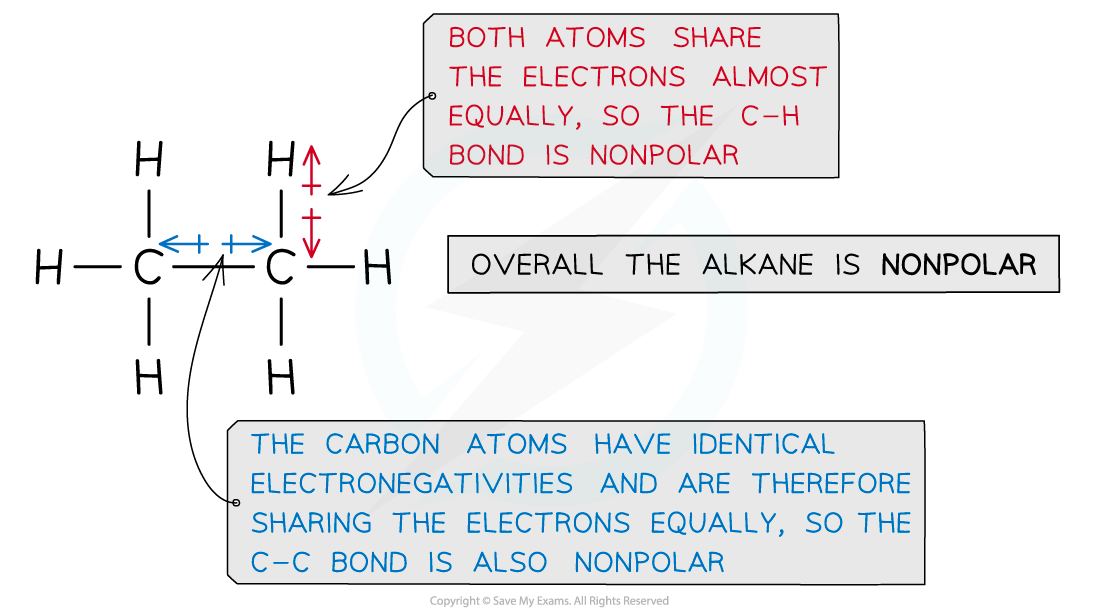Unreactive Alkanes
Strength of C-H bonds
- Alkanes consist of carbon and hydrogen atoms which are bonded together by single bonds
- Unless a lot of heat is supplied, it is difficult to break these strong C-C and C-H covalent bonds
- This decreases the reactivity of alkanes in chemical reactions
Lack of polarity
- The electronegativities of the carbon and hydrogen atoms in alkanes are almost the same
- This means that both atoms share the electrons in the covalent bond almost equally

The Pauling Scale shows that the difference in electronegativity between carbon and hydrogen is only 0.4
- As a result of this, alkanes are nonpolar molecules and have no partial positive or negative charges (δ+ and δ- respectively)
- Alkanes therefore do not react with polar reagents
- They have no electron-deficient areas to attract nucleophiles
- And also lack electron-rich areas to attract electrophiles

Ethane is an example of an alkane that lacks polarity due to almost similar electronegativities of the carbon and hydrogen atoms
- Due to the unreactivity of alkanes, they only react in combustion reactions and undergo substitution by halogens
Exam Tip
Remember: nucleophiles are negatively charged and are attracted to electron-deficient regions.Electrophiles are positively charged and attracted to electron-rich regions.
Combustion of Alkanes
- Alkanes are combusted (burnt) on a large scale for their use as fuels
- They also react in free-radical substitution reactions to form more reactive halogenoalkanes
Complete combustion
- When alkanes are burnt in excess (plenty of) oxygen, complete combustion will take place and all carbon and hydrogen will be oxidised to carbon dioxide and water respectively
- For example, the complete combustion of octane to carbon dioxide and water

The complete combustion of alkanes
Incomplete combustion
- When alkanes are burnt in only a limited supply of oxygen, incomplete combustion will take place and not all the carbon is fully oxidised
- Some carbon is only partially oxidised to form carbon monoxide
- For example, the incomplete combustion of octane to form carbon monoxide

The incomplete combustion of alkanes
- Carbon monoxide is a toxic gas as it will bind to haemoglobin in blood which can then no longer bind oxygen
- As no oxygen can be transported around the body, victims will feel dizzy, lose consciousness and if not removed from the carbon monoxide, they can die
- Carbon monoxide is extremely dangerous as it is odourless (it doesn’t smell) and will not be noticed
- Incomplete combustion often takes place inside a car engine due to a limited amount of oxygen present
- With a reduced supply of oxygen, carbon will be produced in the form of soot:

The incomplete combustion of alkanes (2)
Exam Tip
Incomplete combustion of alkanes never produces hydrogen as it is always preferentially oxidised in any available oxygen, rather than carbon
